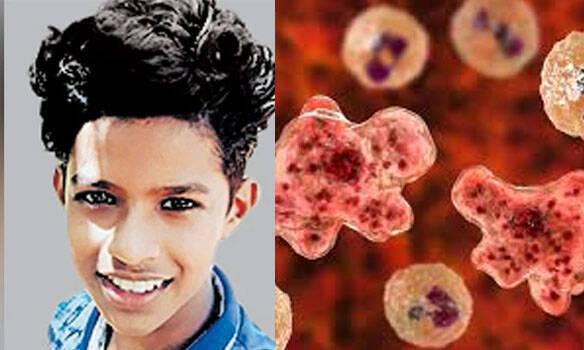
Rare ‘brain-eating amoeba’ takes life of a 15-year-old boy in Kerala
text_fieldsAlappuzha: A 15-year-old boy named Gurudath, a 10th-standard student from the Alappuzha district, succumbed to Primary Amoebic Meningoencephalitis (PAM) on Friday, July 7.
Gurudath had been undergoing treatment at the Alappuzha Medical College hospital since July 1 after experiencing fever and seizures. PAM, also known as Amoebic Encephalitis, is caused by the brain-eating amoeba Naegleria fowleri.
According to Kerala Health Minister Veena George, this rare brain infection is not contagious, and there is no cause for panic among the public. Kerala has previously witnessed five cases of PAM, occurring in 2016, 2019, 2020, and 2022, all of which unfortunately resulted in fatalities.
Minister George emphasized that the amoeba responsible for PAM is typically found in stagnant waters and can enter the body through the thin skin of the nose.
The Centers for Disease Control and Prevention (CDC) in the United States, an authority on infectious diseases, describes PAM as an infection caused by the amoeba Naegleria fowleri, which thrives in warm freshwater sources like lakes, rivers, and hot springs.
It earns its infamous nickname, the "brain-eating amoeba," due to its potential to cause a brain infection when contaminated water enters the nasal passages. While PAM is rare even in the US, where approximately three cases are reported annually, it can have severe consequences.
The CDC clarifies that individuals contract the infection when water containing Naegleria fowleri enters their noses during activities such as swimming or when exposed to infected water. Drinking contaminated water, on the other hand, does not pose a risk of infection, as stated by the CDC.
Typically, PAM begins with symptoms such as severe frontal headache, fever, nausea, and vomiting. Treatment for PAM involves a combination of drugs, although the condition is known to be highly fatal. However, there have been documented cases where individuals have survived the infection.
Health authorities emphasize that such cases of PAM are extremely rare. It is crucial to remain vigilant and take precautions while engaging in water-related activities, especially in stagnant freshwater environments.

















